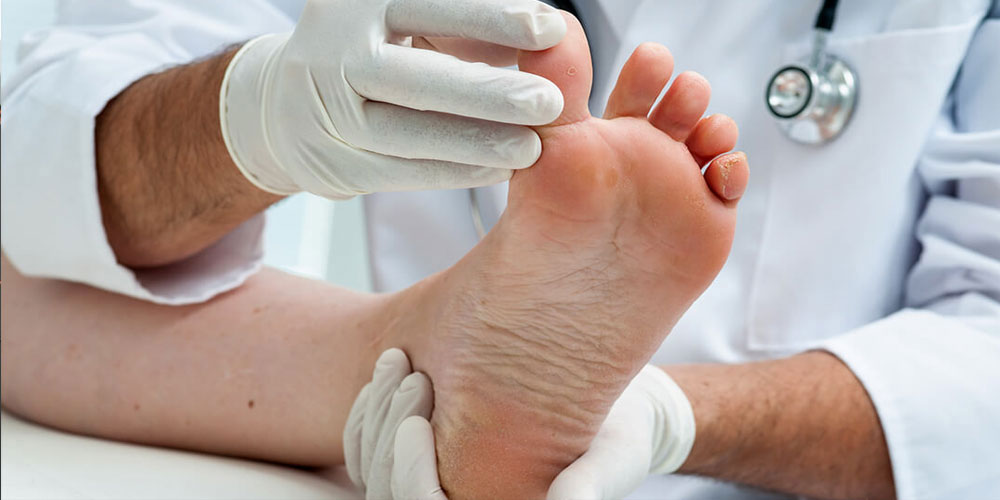
What is a diabetic foot exam?
People with DIABETES are at higher risk for a variety of foot health problems. A diabetic foot exam checks people with diabetes for these problems, which include infection, injury, and bone abnormalities. Nerve damage, known as neuropathy and poor circulation (blood flow) are the most common causes of Diabetic foot problems.
Neuropathy can make your feet feel numb or tingly. It can also cause a loss of feeling in your feet. So if you get a foot injury, like a callus or blister, or even a deep sore known as an ulcer, you may not even know it.
Poor circulation in the foot can make it harder for you to fight foot infections and heal from injuries. If you have diabetes and get a foot ulcer or other injury, your body may not be able to heal it fast enough. This can lead to an infection, which can quickly become serious. If a foot infection is not treated right away, it can become so dangerous that your foot may need to be amputated to save your life.
Fortunately, regular diabetic foot exams, as well as home care, can help prevent serious foot health problems.
What is it used for?
A diabetic foot exam is used to check for foot health problems in people with diabetes. When ulcers or other foot problems are found and treated early, it can prevent serious complications.
Why do I need a diabetic foot exam?
People with diabetes should get a diabetic foot exam at least once a year. You may need an exam more often if your feet have any of the following symptoms:
- ✅ Tingling
- ✅ Numbness
- ✅ Pain
- ✅ Burning sensation
- ✅ Swelling
- ✅ Pain and difficulty when walking
You should call your health care provider right away if you have any of the following symptoms, which are signs of a serious infection: - ✅ A blister, cut, or other foot injury that doesn't start to heal after a few days
- ✅ A foot injury that feels warm when you touch it
- ✅ Redness around a foot injury
- ✅ A callus with dried blood inside it
- ✅ An injury that is black and smelly. This is a sign of gangrene the death of body tissue. If not treated promptly, gangrene can lead to amputation of the foot, or even death.
What happens during a diabetic foot exam?
A diabetic foot exam may be done by your primary care provider and/or a foot doctor, known as a podiatrist. A foot doctor specializes in keeping feet healthy and treating diseases of the feet. The exam usually includes the following:
General assessment. Your provider will:
- ✅ Ask questions about your health history and any previous problems you've had with your feet.
- ✅ Check your shoes for proper fit and ask questions about your other footwear. Shoes that don't fit well or are otherwise uncomfortable can lead to blisters, calluses, and ulcers.
Dermatological assessment. Your provider will:
- ✅ Look for various skin problems, including dryness, cracking, calluses, blisters, and ulcers.
- ✅ Check the toenails for cracks or fungal infection.
- ✅ Check between the toes for signs of a fungal infection.
Neurologic assessments. These are a series of tests that include:
- ✅ Monofilament test. Your provider will brush a soft nylon fiber called a monofilament over your foot and toes to test your foot's sensitivity to touch. .
- ✅ Tuning fork and visual perception tests (VPT). Your provider will place a tuning fork or other device against your foot and toes to see if you can feel the vibration it produces. .
- ✅ Pinprick test. Your provider will gently poke the bottom of your foot with a small pin to see if you can feel it. .
- ✅ Ankle reflexes. Your provider will check your ankle reflexes by tapping on your foot with a small mallet. This is similar to a test you may get at an annual physical, in which your provider taps just below your knee to check your reflexes.
